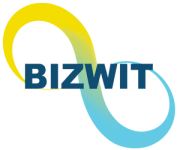At Bizwit Research and Consultancy, we employ a thorough and iterative research methodology with the goal of minimizing discrepancies, ensuring the provision of highly accurate estimates and predictions over the forecast period. Our approach involves a combination of bottom-up and top-down strategies to effectively segment and estimate quantitative aspects of the market, utilizing our proprietary data & AI tools. Our Proprietary Tools allow us for the creation of customized models specific to the research objectives. This enables us to develop tailored statistical models and forecasting algorithms to estimate market trends, future growth, or consumer behavior. The customization enhances the accuracy and relevance of the research findings.
We are dedicated to clearly communicating the purpose and objectives of each research project in the final deliverables. Our process begins by identifying the specific problem or challenge our client wishes to address, and from there, we establish precise research questions that need to be answered. To gain a comprehensive understanding of the subject matter and identify the most relevant trends and best practices, we conduct an extensive review of existing literature, industry reports, case studies, and pertinent academic research.
Critical elements of methodology employed for all our studies include:
Data Collection:
To determine the appropriate methods of data collection based on the research objectives, we consider both primary and secondary sources. Primary data collection involves gathering information directly from various industry experts in core and related fields, original equipment manufacturers (OEMs), vendors, suppliers, technology developers, alliances, and organizations. These sources encompass all segments of the value chain within the specific industry. Through in-depth interviews, we engage with key industry participants, subject-matter experts, C-level executives of major market players, industry consultants, and other relevant experts. This allows us to obtain and validate critical qualitative and quantitative information while evaluating market prospects. AI and Big Data are instrumental in our primary research, providing us with powerful tools to collect, analyze, and derive insights from data efficiently. These technologies contribute to the advancement of research methodologies, enabling us to make data-driven decisions and uncover valuable findings.
In addition to primary sources, we extensively utilize secondary sources to enhance our research. These include directories, databases, journals focusing on related industries, company newsletters, and information portals such as Bloomberg, D&B Hoovers, and Factiva. These secondary sources enable us to identify and gather valuable information for our comprehensive, technical, market-oriented, and commercial study of the market. Additionally, we utilize AI algorithms to automate the collection of vast amounts of data from various sources such as surveys, social media platforms, online transactions, and web scraping. And employ Big Data technologies for storage and processing of large datasets, ensuring that no valuable information is missed during the data collection process.
Data Analysis:
Our team of experts carefully examine the gathered data using suitable statistical techniques and qualitative analysis methods. For quantitative analysis, we employ descriptive statistics, regression analysis, and other advanced statistical methods, depending on the characteristics of the data. This analysis may also incorporate the utilization of AI tools and big data analysis techniques to extract meaningful insights.
To ensure the accuracy and reliability of our findings, we extensively leverage data science techniques, which help us minimize discrepancies and uncertainties in our analysis. We employ Data Science to clean and preprocess the data, ensuring its quality and reliability. This involves handling missing data, removing outliers, standardizing variables, and transforming data into suitable formats for analysis. The application of data science techniques enhances our accuracy, efficiency, and depth of analysis, enabling us to stay competitive in dynamic market environments.
Market Size Estimation:
Our proprietary data tools play a crucial role in deriving our market estimates and forecasts. Each study involves the creation of a unique and customized model. The model incorporates the gathered information on market dynamics, technology landscape, application development, and pricing trends. AI techniques, such as machine learning and deep learning, aid us to analyze patterns within the data to identify correlations, trends, and relationships. By recognizing patterns in consumer behavior, purchasing habits, or market dynamics, our AI algorithms aid us in more precise estimations of market size. These factors are simultaneously analyzed within the model, allowing for a comprehensive assessment. To quantify their impact over the forecast period, correlation, regression, and time series analysis are employed.
To estimate and validate the market size, we employ both top-down and bottom-up approaches. The preference is given to a bottom-up approach, where key regional markets are analyzed as separate entities. This data is then integrated to obtain global estimates. This approach is crucial as it provides a deep understanding of the industry and helps minimize errors.
In our forecasting process, we consider various parameters such as economic tools, technological analysis, industry experience, and domain expertise. By taking all these factors into account, we strive to produce accurate and reliable market forecasts. When forecasting, we take into consideration several parameters, which include:
Market driving trends and favorable economic conditions
Restraints and challenges that are expected to be encountered during the forecast period.
Anticipated opportunities for growth and development
Technological advancements and projected developments in the market
Consumer spending trends and dynamics
Shifts in consumer preferences and behaviors.
The current state of raw materials and trends in supply versus pricing
Regulatory landscape and expected changes or developments.
The existing capacity in the market and any expected additions or expansions up to the end of the forecast period.
To assess the market impact of these parameters, we assign weights to each one and utilize weighted average analysis. This process allows us to quantify their influence on the market and derive an expected growth rate for the forecasted period. By considering these various factors and applying a weighted analysis approach, we strive to provide accurate and reliable market forecasts.
Insight Generation & Report Presentation:
After conducting the research, our experts analyze the findings in relation to the research objectives and the specific needs of the client. They generate valuable insights and recommendations that directly address the client’s business challenges. These insights are carefully connected to the research findings to provide a comprehensive understanding.
Next, we create a well-structured research report that effectively communicates the research findings, insights, and recommendations to the client. To enhance clarity and comprehension, we utilize visual aids such as charts, graphs, and tables. These visual elements are employed to present the data in an engaging and easily understandable format, ensuring that the information is accessible and visually appealing to the client. Our aim is to deliver a clear and concise report that conveys the research findings effectively and provides actionable recommendations to meet the client’s specific needs.



